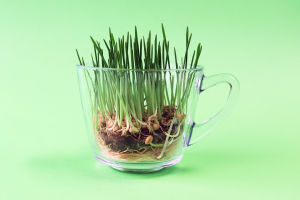A lush, dense, and vibrant green lawn is the dream of many homeowners.
It’s the perfect backdrop for summer barbecues, a safe place for children to play, and a beautiful enhancement to your home’s curb appeal.
However, achieving that dreamy turf requires more than just watering and mowing. It involves understanding your grass, nurturing it with care, and adopting effective maintenance practices. Here are five essential tips to help you create and maintain the perfect green lawn.
1. Choose the Right Grass Type
The foundation of a beautiful lawn starts with selecting the right type of grass. Different grass species thrive under different conditions, so it’s crucial to choose one that suits your climate, soil, and level of sunlight.
- Cool-season grasses like Kentucky bluegrass, ryegrass, and fescues are ideal for regions with cold winters and moderate summers. They grow best in temperatures between 60-75°F and have a deep green color.
- Warm-season grasses such as Bermuda grass, Zoysia, and St. Augustine are better suited for hot climates. They flourish when temperatures are between 80-95°F and are more drought-tolerant.
Consider your region's climate, the amount of shade in your yard, and your lawn’s intended use before making your choice. A well-matched grass type is the first step towards a healthy, thriving lawn.
2. Proper Mowing Techniques
Mowing is more than just a chore; it’s a critical part of lawn care that impacts the health and appearance of your grass. Here are some key mowing tips to keep in mind:
- Mow at the right height: Different grass types have different ideal mowing heights. For example, Bermuda grass should be cut to about 1-1.5 inches, while Kentucky bluegrass thrives at 2.5-3.5 inches. Mowing at the proper height helps promote strong root growth and reduces the risk of weeds.
- Keep your mower blades sharp: Dull blades tear the grass rather than cut it cleanly, leading to ragged edges that can turn brown and increase the grass’s susceptibility to disease.
- Follow the one-third rule: Never cut more than one-third of the grass blade’s height in a single mowing session. Removing too much at once can stress the grass and hinder its growth.
Regular mowing, done correctly, encourages the grass to grow thicker, creating a dense, green turf.
3. Water Wisely
Watering is essential, but it’s important to do it right to avoid issues like shallow roots or fungal diseases. Here’s how to water your lawn effectively:
- Water deeply and infrequently: Deep watering encourages roots to grow deeper into the soil, making the grass more resilient to drought. Aim to water your lawn about once or twice a week, providing enough water to moisten the soil to a depth of 6-8 inches.
- Water in the early morning: The best time to water your lawn is early in the morning, between 6-10 a.m. This enables the liquid to infiltrate the ground before the day's warmth soaks into the soil.
- Avoid overwatering: Too much water can lead to fungal diseases and can wash away nutrients from the soil. Use a rain gauge or soil moisture sensor to ensure your lawn is getting the right amount of water.
Consistent and proper watering is key to maintaining a lush, green lawn.
4. Fertilize for Healthy Growth
Fertilizing provides your grass with the nutrients it needs to grow thick and green. But it is always essential to have the right type of compost and the proper quantity:
- Choose the right fertilizer: Look for a balanced fertilizer that contains nitrogen, phosphorus, and potassium (N-P-K). These nutritional supplements are helpful for leaf production, root development, and general plant wellness.
- Follow a fertilizer schedule: The majority of lawns receive the benefit of both spring and fall applications. Cool-season grasses typically need fertilization in the fall, while warm-season grasses benefit from a spring application.
- Avoid over-fertilizing: Applying too much fertilizer can burn your grass and lead to excessive growth that requires more frequent mowing. Always follow the manufacturer’s recommendations.
A well-fed lawn is a healthy lawn, and proper fertilization will help you achieve that dreamy, dense turf.
5. Control Weeds and Pests
Weeds and pests can quickly turn a beautiful lawn into an unsightly mess. Proactive control measures are necessary to keep them at bay:
- Use pre-emergent herbicides: Apply pre-emergent herbicides in early spring to prevent weed seeds from germinating. This is especially effective against common weeds like crabgrass.
- Spot-treat weeds: For weeds that do appear, use post-emergent herbicides or manually remove them. Be careful not to damage the surrounding grass.
- Monitor for pests: Keep an eye out for signs of pests, such as thinning grass, brown patches, or visible insects. If you detect a problem, use appropriate pesticides or consider introducing natural predators like ladybugs or nematodes.
By controlling weeds and pests, you can protect the health and appearance of your lawn.
Creating and maintaining a dreamy, dense, green lawn requires consistent care and attention to detail. By choosing the right grass type, mowing properly, watering wisely, fertilizing regularly, and controlling weeds and pests, you can enjoy a lush, vibrant turf that will be the envy of your neighborhood. With these grass maintenance basics, your lawn will thrive and remain a beautiful, green oasis for years to come.


